- Home
- Prelims
- Mains
- Current Affairs
- Study Materials
- Test Series
 EDITORIALS & ARTICLES
EDITORIALS & ARTICLES
Jan 04, 2022
BREAKTHROUGH IN BATTERY TECH
California-based QuantumScape Corp has come up with a novel solid state battery technology that could offer a safer, cheaper alternative to lithium-ion batteries.
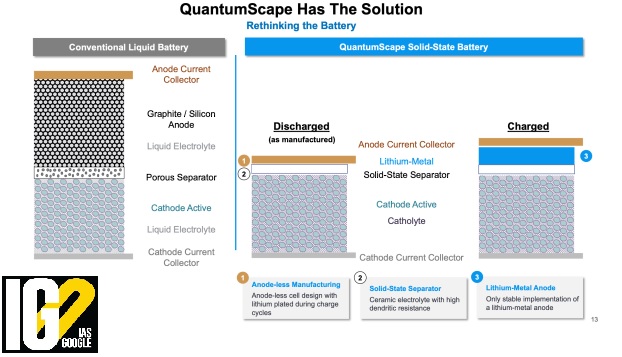 Solid State Batteries:
Solid State Batteries:
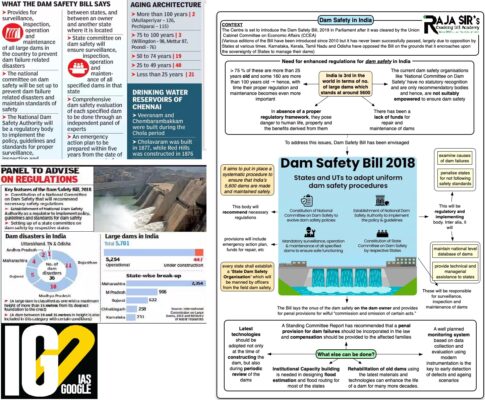 Importance of dam maintenance?
Importance of dam maintenance?
 Census
Census
 Highlights:
Highlights:
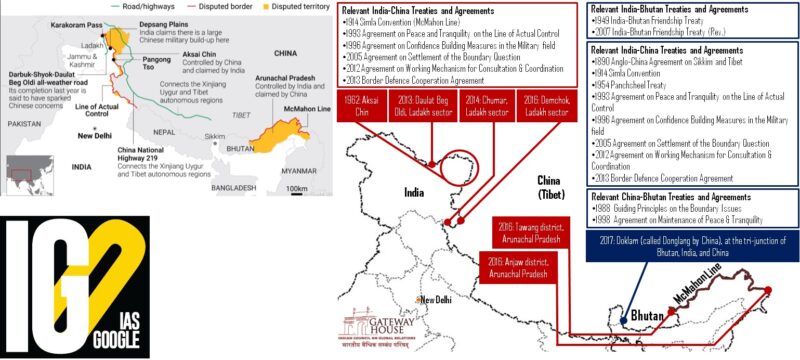 What is the new law?
What is the new law?
 Counter-Terrorism Committee Executive Directorate (CTED):
Counter-Terrorism Committee Executive Directorate (CTED):
 Treaty on the Non-Proliferation of nuclear weapons (NPT)
Treaty on the Non-Proliferation of nuclear weapons (NPT)
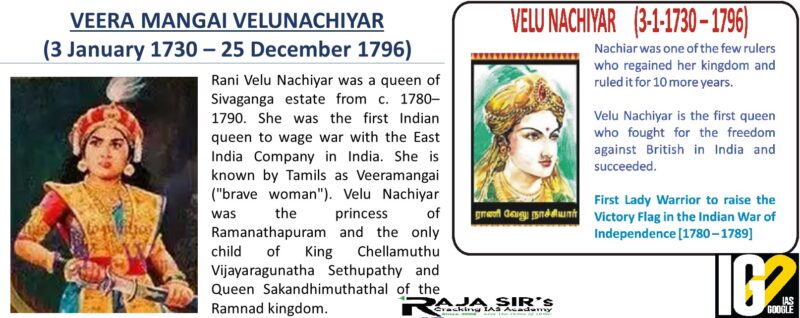 Rani Velu Nachiyar (1730-1796)
Rani Velu Nachiyar (1730-1796)

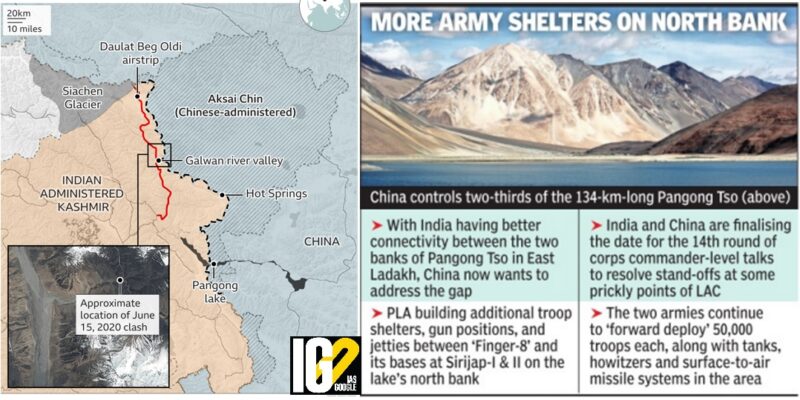 Pangong Lake:
Pangong Lake:
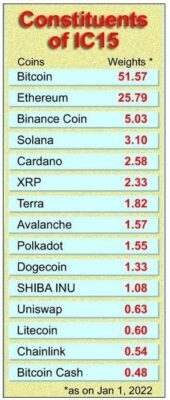 IC-15:
IC-15:

 Solid State Batteries:
Solid State Batteries:
- Solid-state lithium-metal battery replaces the polymer separator used in conventional lithium-ion batteries with a solid-state separator.
- The replacement of the separator enables the use of a lithium-metal anode in place of the traditional carbon/graphite anode.
- Solid state separator technology will eliminate the side reaction between the liquid electrolyte and the carbon/graphite in the anode of conventional lithium-ion cells.
- Lithium batteries suffer from issues such as long charging times and weak energy density.
- Lithium-ion batteries lack the range that would make Electric Vehicles (EV) a viable alternative to internal combustion engines.
- Lithium metal is extremely reactive.
- In current lithium-ion batteries, in which the electrolyte is a flammable liquid, dendrite formation can trigger a fire.
- Higher cell energy density
- Lower charge time
- Ability to undertake more charging cycles
- A longer life
- Improved safety.
- The central government is working on a blueprint for a project of around 4,000 MWh of grid-scale battery storage system at the regional load dispatch centres.
- It aims to primarily to balance the vagaries of renewable generation.
- State-owned NTPC Ltd (National Thermal Power Corporation Limited) has floated a global tender for a grid-scale battery storage project.
- The Ministry of Heavy Industries issued a request for proposal for setting up manufacturing facilities for Advanced Chemistry Cell (ACC) battery storage in India.
- The scheme was instituted in 2006.
- Aim: To acknowledge, recognize and reward the extraordinary and innovative work done by District/organizations of the Central, State Governments.
- It was restructured again in 2020, to recognize the performance of District Collectors towards economic development of the district.
- The contribution of District Collectors would be recognized for:
- Implementation of Inclusive Credit Flow to the Priority Sector
- Promoting people’s movements through Jan Bhagidari
- Improving Service Delivery and Redressal of Public Grievances.
- The award also seeks to recognize the efforts of District level officials in Namami Gange Program.
- The report stated that Gandhi Sagar Dam requires immediate repair due to absence of regular checks, non-functional instruments and choked drains.
- Gandhi Sagar Dam is a masonry gravity dam on Chambal River in the Mandsaur, district of Madhya Pradesh.
 Importance of dam maintenance?
Importance of dam maintenance?
- Indian dams are very old and built according to the rainfall pattern of the past decades.
- The erratic rainfall in recent years has left them
- Older dams pose greater safety risks, cost higher in terms of maintenance and have declining functionality due to sedimentation.
- Factors affecting dam maintenance includes temperatures increase, significant changes in seasonal and annual rainfall patterns.
- Climate change can accelerate the ageing of dams.
- There is no standardization in how dam failure analyses are conducted and reported.
- Dam failure analysis is done in India as part of Environment Impact Assessment (EIA) for projects requiring environmental clearance.
- Also, the guidelines developed by the CWC are not legally binding.
- There is a lack of a risk-based decision-making system for making decisions regarding feasibility, location and design of proposed dam.
- The state dam safety organization (SDSO), the department responsible for its maintenance, did not comply with recommendations by the Central Water Commission (CWC) and Dam Safety Inspection Pane (DSIP) on remedial measures.
- Lack of a centralized repository for information regarding dam failure events.
- In India, large dams are those dams higher than 15 meters or between 10-15 meters in height, that fulfil certain additional design conditions.
- Over 75% of the dams are more than 20 years old, and about 220 dams are more than 100 years old.
- Most of these large dams are in Maharashtra (2394), Madhya Pradesh (906), and Gujarat (632).
- The Central Government can legislate on matters related to the protection of the environment and safety of dams under the Environment Protection Act, 1986.
- The existing dam safety regulations are part of the Environmental Impact Assessment (EIA) notifications issued under the Environment Protection Act, 1986.
- The Bill provides for the surveillance, inspection, operation, and maintenance of all specified dams across the country.
- It constitutes two national bodies:
- National Committee on Dam Safety (NCDS), whose functions include evolving policies and recommending regulations regarding dam safety standards.
- National Dam Safety Authority, whose functions include
- Implementing policies of the National Committee,
- Providing technical assistance to State Dam Safety Organizations (SDSOs), and
- Resolving matters between SDSOs of states or between a SDSO and any dam owner in that state.
- It also constitutes two state bodies: State Committee on Dam Safety, and State Dam Safety Organization.
- These bodies will be responsible for the surveillance, inspection, and monitoring the operation and maintenance of dams within their jurisdiction.
- Central Dam Safety Organization, under the Central Water Commission (CWC), provides technical assistance to the Dam Owners, and maintains data on Dams.
- The CWC has issued guidelines for:
- Dam Safety Procedures
- Safety Inspection of Dams
- Development and Implementation of Emergency Action Plan (EAP) for Dams
- Standardized Data Book Format, Sample Checklist and Proforma for Periodical Inspection of Dams.
- There is an urgent need to institute mechanisms for regular sharing of dam-related data between the states and the centre.
- The ultimate authority is in the respective states, as states are responsible for dam safety regulation.
- A decommissioning policy needs to be put in place for removing or reconstructing dams which cannot be repaired or upgraded.
- Ministry of Environment, Forest and Climate Change (MoEF) should set up a database linking information for cleared projects with the static dam-related information from Indian Space Research Organization (ISRO)’s Water Resources Information System (WRIS).
- MoEF needs to institute legally binding standards for conducting and reporting dam failure analysis.
- Dam failure analysis needs to be a regular activity for all large dams.
- The methodology should be further refined to use the latest data from routine inspections and surveillance.
- Inundation maps should be a compulsory feature of dam failure analyses.
- The dam failure analysis without an inundation map, is of limited use to local officials in charge of mitigation work and emergency response.
- The CWC has developed detailed guidelines on dam failure analysis and preparation of inundation maps, including a component of consequence analysis.
- India needs to move towards risk-based design standards which can better balance safety and costs.
- There needs to be a pan-India statutory framework for reporting and recording dam failure events.
 Census
Census
- Census is the method for reviewing the country's progress in the past decade, monitoring the ongoing schemes of the government, and planning for the future.
- Duration: Census is conducted every 10 years in India.
- In this phase, buildings and structures, residential, partly residential or non-residential, (statistics on housing stock), along with availability of basic amenities in each household and condition of human settlements are listed systematically.
- It helps in assessment of housing deficit, besides overall quality of dwellings and people living therein.
- It follows the Housing Census within a gap of six to eight months.
- It counts each and every person in the country, Indian national, along with her/his individual particulars and information on social, cultural, demographic, economic and other aspects.
- The Indian Census is the largest single source of a variety of statistical information on different characteristics of the people of India.
- The responsibility of conducting the decennial Census rests with the Office of the Registrar General and Census Commissioner, India under Ministry of Home Affairs.
- Census data is taken by visiting every household and gathering particulars by asking questions and filling up census forms.
- The information collected during the process is confidential. This information is not even accessible to the courts of law.
- The forms are transported to data processing centers located in 15 cities across the country.
- Intelligent Character Recognition Software (ICR) is the technology that came in India in Census 2001 and has become the benchmark for censuses all around the globe.
- The first complete census of India was conducted in 1830 by Henry Walter in Dacca.
- In this census, the statistics of the population with sex, broad age group, and the houses with their amenities were collected.
- The second Census was conducted in 1836-37 by Fort St. George according to the government website of Census India.
- NPR is a register of usual residents of the country.
- Every usual resident of India must register in the NPR.
- It includes both Indian citizens as well as foreign citizens.
- Objective: To create a comprehensive identity database of every usual resident in the country.
- The first National Population Register was prepared in 2010 and updating this data was done during 2015 by conducting door to door survey.
- Vaccines are complex mixtures of proteins, carbohydrates, lipids, inactivated virus, or adjuvants.
- They are substances that are intended to enhance immune response and subsequent clinical efficacy of the vaccine.
- These together contribute to overall vaccine efficacy and safety.
- Like other medicinal products, vaccines come with a date of expiry and shelf life determined by the manufacturer and approved by regulatory authorities.
- The constituents of a vaccine can go bad over time because of slow chemical reactions and lose efficacy.
- According to the World Health Organization (WHO), stability is the ability of a vaccine to retain its chemical, physical, microbiological and biological properties within specified limits throughout its shelf life.
- There are three specific objectives of stability studies, which differ throughout a vaccine’s lifetime.
- First, it is conducted to determine shelf life and storage conditions.
- Second, the stability studies, monitor vaccine stability in the post-licensure period, that is, when the vaccine is marketed commercially.
- Third, according to the WHO guidelines, stability studies are conducted to support manufacturing changes by demonstrating comparability of product manufactured by different processes.
- Shelf life is calculated by storing the product at different temperatures for various lengths of time and then testing its effectiveness.
- According to the WHO guidelines
- The shelf life of a vaccine is the period of time during which the vaccine, if stored correctly, is expected to comply with the specification, as determined by stability studies on a number of batches of the product.
- The shelf life is used to establish the expiry date of each batch.
- It is a single platform to provide the best-developed ed-tech solutions and courses to students of the country.
- It will bridge the digital divide, especially among the economically disadvantaged students.
- Helpful in fulfilling the knowledge-based requirement of India and the world.
- Helps in bettering learning outcomes, developing employable skills and overcoming learning loss.
- It is an initiative to provide the use of best-developed technological solutions in the education sector.
- Aim: To enhance the employability of the youth on a single platform for learners' convenience.
- These solutions use Artificial Intelligence for a personalized and customized learning experience for better learning outcomes and skill development in the niche areas.
- AICTE (All India Council for Technical Education), MoE (Ministry of Education) is acting as the facilitator in the process while ensuring that the solutions are freely available to a large number of socially and economically backward students.
 Highlights:
Highlights:
- Global air temperature decreases by 0.03~0.08 °C, after 50 years of large-scale bio-energy crop cultivation.
- Eucalypt is superior to switchgrass in cooling the lands biophysically.
- Bioenergy crops are defined as any plant material used to produce bioenergy.
- These crops have the capacity to produce large volume of biomass, high energy potential, and can be grown in marginal soils.
- Switchgrass, elephant grass, poplar, willow, mesquite, etc. are some examples of bio energy crops.
- They are resistant to diseases and pests due to perennial nature.
- Bioenergy plans have improved phenotypic, architectural, biochemical and physiological characters which are desirable traits in biofuel production.
- Moreover, bioenergy crops grow faster than other crops.
- They require less biological, chemical or physical pre-treatments.
- Bioenergy crops require low energy for the establishment, possess good adaptation to marginal lands and hold higher biomass.
- These plants decrease global warming and mitigate the effect of global climate change.
- Bioenergy plants store thermo-chemical and solar energy in several biochemical forms.
- The physiological traits include efficient nutrient cycling, low nutrient requirement, carbon sequestration, low competition among plan groups, long canopy duration and effective light capturing.
- Bioenergy crops are a good energy source.
- Carbohydrate generation is a valuable trait in bioenergy crops.
- Ministry of New and Renewable Energy (MNRE) has set the national target is to achieve 10 GW of installed biomass power by 2022.
- MNRE provides financial incentives and subsidies for project that uses biomass and bagasse cogeneration technology.
- MNRE also plans on creating a ‘National Biomass Repository’ to ensure availability of biofuels produced from domestic feedstock.
- The National Policy on Biofuels is aimed at taking forward the indicative target of achieving 20% blending of biofuels with fossil-based fuels by 2030.
- Offline payments can be made in face-to-face(proximity) mode only.
- Payment instruments will be enabled for offline transactions by Authorised Payment System Operators and Participants (Banks and Non-banks).
- The offline digital payment transaction will not require an Additional Factor of Authentication (AFA).
- Offline mode of payment can be enabled only after obtaining specific consent of the provisions of circulars limiting customer liability issued by Reserve Bank.
- Customers have recourse to the Reserve Bank Integrated Ombudsman Scheme for grievance redress.
- Payment instruments shall be enabled for offline transactions based on the explicit consent of the customer.
- Reserve Bank retains the right to stop or modify the operations of any such payment solution that enables small value digital payments in offline mode.
- Limit of Transaction
- The upper limit of an offline payment transaction will be₹200.
- The total limit for offline transactions on a payment instrument will be ₹2,000 at any point in time.
 What is the new law?
What is the new law?
- It mandates the state to take measures to strengthen border defence, support economic and social development in border areas.
- The law lays down conditions under which the state can impose emergency measures, including border shutdown.
- The law prohibits construction of permanent infrastructure close to the border without China’s permission.
- The law emphasizes the responsibilities of China’s provinces, government departments and civilians to play a coordinated role to tackle various national challenges.
- The law contains principles governing water resources of cross border rivers.
- Distrust coupled with ambiguous and aggressive statements are a potent mix likely to cause armed conflicts in the future.
- The law prohibits the construction of permanent facilities ‘near’ China’s border without permission from Chinese authorities.
- The vague wording could be interpreted to include both sides of the border, creating the potential for additional friction.
- By emphasizing on the development of border towns and the role of civilians, China may intend to expand or accelerate civilian settlement in areas bordering India, Nepal and Bhutan.
- This is a part of the salami slicing tactics used by China in the maritime domain, especially in the South China Sea.
- China has turned a border dispute into a sovereignty dispute, rending it more
- This has brought in the dynamics of ultranationalism and polarization.
- China, may prevent horse-trading or give and take of territories.
- Written agreements related to mutually agreed settlements, ratified by the Parliaments of both countries, needs to supersede any other law related to borders.
- Continuous engagement with China with an aim to resolve the standoff peacefully.
- Enhanced engagement with neighbouring countries so that geographic incursion by China can be curtailed.
- More involvement in QUAD like groupings and focus on security calculus to be a part of such groupings.
- Enhanced engagement with Russia to secure India-Russia bilateral relationship.
- Development of infrastructural connectivity's in mission mode in all border areas— be it road, rail, water or air.
- In addition to axial connectivity's, more focus on lateral connectivity's needs to be given.
- This is most urgently needed to come out of valley-based restrictions on deployment of forces and resources.
- Speeding up of the alteration in revised format as against current land centric approach.
- Development of dual-use infrastructure.
- Dual use products and technologies are used for civilian purposes which also have military applications.
- Undertake mountaineering expeditions with increased frequency along with measures which cement our claim on Indian borders.
- It is a title given by the Tibetan people to the foremost spiritual leader of the Gelug or "Yellow Hat" school of Tibetan Buddhism.
- It is the newest and most dominant of the four major schools of Tibetan Buddhism.
- The Dalai Lama is also known in Tibetan as the Rgyal-ba Rin-po-che. ("Precious Conqueror").
- The 14th and current Dalai Lama is Tenzin Gyatso, who lives as a refugee in India.
- The Dalai Lama is also considered to be the successor in a line of tulkus who are believed to be incarnations of Avalokitesvara, the Bodhisattva of Compassion.
- The Dalai Lama was an important figure of the Geluk tradition, which was politically and numerically dominant in Central Tibet, but his religious authority went beyond sectarian boundaries.
- When a Dalai Lama dies – or even before their death – a successor is found rather than chosen.
- Traditionally, senior Tibetan monks conduct an elaborate quest to find a child who is the Dalai Lama’s next incarnation.
- The search involves consulting oracles, interpreting visions and reading spiritual signs.
- The senior monks may find clues from the deceased body of the Dalai Lama, such as the direction it faces or its posture.
- If the body is cremated, the direction of the smoke is monitored as a potential indicator for the direction of rebirth.
- Besides border disputes, India and China have had major differences over the Dalai Lama.
- After the Chinese forces forcefully occupied Tibet in 1950, the Tibetan Buddhist leader - the Dalai Lama - fled to India in 1959along with tens of thousands of his disciples.
- China has made it clear it intends to announce its own Dalai Lama, as it once did the Panchen Lama, and try to control the succession.
- While Dalai Lama said that his successor could be a living incarnation, in India or even in another country like Taiwan.
- India’s harbouring of the Dalai Lama and more than 150,000 Tibetan refugees has always evoked an angry response from China.
- China objected to Dalai Lama's visit to Tawang which lies in Arunachal Pradesh in an area close to China border.
- India had also voted in favour of UNSC resolution to renew mandate of CTED.
- India is chair of the Counter Terrorism Committee (CTC) of UN Security Council from 1st January 2022 for next one year. The CTC is assisted by the CTED.
- After 9/11 attacks of 2001, UNSC adopted a resolution, requiring all states to take specific measures to combat terrorism.
- To implement and monitor this resolution, CTC was constituted in 2001.
- Function: CTC works for countering terrorism in the world. It also monitors states’ implementation of the resolution.
- Composition of CTC: All 15 sitting UNSC members are represented in CTC.
 Counter-Terrorism Committee Executive Directorate (CTED):
Counter-Terrorism Committee Executive Directorate (CTED):
- Headquarter: New York, USA
- CTED was established by UN Security Council Resolution in 2004.
- CTED is an expert body to support UNSC’s CTC.
- It conducts country visits on the CTC’s behalf to assess Member States' counter-terrorism efforts. It includes assessment of progress made, remaining shortfalls, and priority areas for technical assistance needs, to identify terrorism-related trends and challenges, tec.
- It promotes the good practices in the implementation of relevant Security Council resolutions.
- It consists of around 40 experts in field of security and law, led by an executive director.
- Currently, CTED is divided into two sections:
- Assessment and Technical Assistance Office (ATAO)
- Administrative and Information Office (AIO).
 Treaty on the Non-Proliferation of nuclear weapons (NPT)
Treaty on the Non-Proliferation of nuclear weapons (NPT)
- Aim: To prevent the spread of nuclear weapons and weapons technology.
- Opened for signature in 1968, the Treaty entered into force in 1970.
- A total of 191 States have joined the Treaty.
- India, Israel, and Pakistan have not accepted the NPT.
- Undertaking to co-operate in facilitating the application of International Atomic Energy Agency safeguards on peaceful nuclear activities.
- Believing that the proliferation of nuclear weapons would seriously enhance the danger of nuclear war.
- Desiring to further the easing of international tension and the strengthening of trust between States in order to facilitate the cessation of the manufacture of nuclear weapons.
- Declaring their intention to achieve at the earliest possible date the cessation of the nuclear arms race and to undertake effective measures in the direction of nuclear disarmament.
- The nuclear shock wave can directly injure humans by rupturing eardrums or lungs or by hurling people at high speed.
- Unlike conventional explosions, a single nuclear explosion can generate an intense pulse of thermal radiation that can start fires and burn skin over large areas.
- Nuclear detonations release large amounts of neutron and gamma radiation.
- Detonation of a nuclear weapon in a forested area virtually guarantees fire damage at ranges greater than the range of air-blast damage.
- Certain cancers such as thyroid cancer in children is particularly associated with exposure to radiation.
- The children of those exposed to radiation are statistically more likely to be born with abnormalities and suffer from leukemia.
- DRDO is the R&D wing of Ministry of Defence, Government of India.
- It was formed in 1958 from the amalgamation of Technical Development Establishment (TDEs) of the Indian Army and the Directorate of Technical Development & Production (DTDP) with the Defence Science Organisation (DSO).
- Headquarters: New Delhi
- Aim: Empowering the nation with state-of-the-art indigenous Defence technologies and systems.
- Design, develop and lead to production state-of-the-art sensors, weapon systems, platforms for the Defence Services.
- Provide technological solutions to the Services to optimize combat effectiveness and to promote well-being of the troops.
- Develop infrastructure and committed quality manpower and build strong indigenous technology base.
- DRDO is working on multiple cutting-edge military technology areas such as Aeronautics, armaments, combat vehicles, simulation, cyber, hypersonic technologies, quantum computing and communication, artificial intelligence etc.
- 175 transfer of technology (ToT) licenses were signed during 2021
- DRDO is ensuring the participation of industry as Development cum Production Partners (DcPP) and Production Agencies (PA) in the projects.
- Test facilities have been opened up for industries and guidelines for GOCO (Government Owned and Company Operated) have been promulgated.
- DRDO technologies played a crucial role during second wave of Covid.
- medical oxygen plants and covid hospitals were set up
- Anti-Covid drug in the form of therapeutic application of 2-deoxy-D-glucone (2DG) developed by DRDO promoted Self Sufficiency.
- DRDO launched, Dare to Dream contest, Regular MTech Programme in Defence Technologies in 40 Universities through AICTE.
- It has introduced elective subjects in Defence Technologies for BTech courses,
- DRDO-MoE collaborative programme for PhD students and MoU with universities focus on joint research activities, faculty and student exchange programme.
- Through the Technology Development Fund (TDF), it has assigned 40 projects to industries and MSME’s.
- It conducted maiden flight of
- Akash-New Generation Surface to Air Missile (NG SAM).
- New generation surface-to-surface missile
- Indigenous air frames for BrahMos supersonic cruise missile.
- Vertical Launch Short Range SAM, Stand-off Anti-Tank (SANT) missile.
- Supersonic missile assisted release of Torpedo
 Rani Velu Nachiyar (1730-1796)
Rani Velu Nachiyar (1730-1796)
- She was queen of Sethupathi Dynasty of Tamil Nadu (Ramnad kingdom).
- She was trained in war match weapons usage, martial arts like Valari, Silambam (fighting using stick), horse riding and archery.
- She also had proficiency with languages like French, English and Urdu.
- Her husband, Muthuvaduganathaperiya Udaiyathevar (king of Sivagangai), was killed by British soldiers and the son of the Nawab of Arcot.
- After killing of her husband, she lived at Virupachi near Dindigul, under protection of Hyder ali for 8 years.
- During that time, she had made alliance with Hyder ali and Gopala Nayaker to defeat Britishers.
- Later, in 1780, she recaptured her Sivagangai with help of Hyder Ali and Maruthu brothers.
- She had formed a woman's army named “Udaiyaal” in honour of her adopted daughter, who died detonating a British arsenal.
- She considered as the first queen to fight for the freedom from the East India Company. Due to her valour, she is known by tamils as Veeramangai (brave women).
- She revolted for the freedom of India, 85 years before Jhansi Rani’s freedom struggle.

- Recently, scientists concluded that fibromyalgia is an autoimmune disorder.
- An autoimmune disease is a condition in which your immune system mistakenly attacks the body.
- It is a condition that causes pain all over the body sleep problems, fatigue, and often emotional and mental distress.
- Fibromyalgia is one of the most common orthopedic conditions worldwide, affecting roughly one in every 40 people.
- Symptoms
- Muscle pain, burning, twitching, or tightness, Low pain threshold, or tender points.
- The bridge is being constructed on more than 20 km east of Finger 8 area on the lake’s north bank.
 Pangong Lake:
Pangong Lake:
- Pangong Lake is also known as Pangong Tso.
- It is an endorheic lake situated in the Himalayas at a height of 4350 m.
- It is 134 km long, extending from India to China.
- It is famous for its saline water.
- One third area of the lake lies within India. Other two third portion lies with Tibet and is controlled by China.
- The lake is in the process of being identified under the Ramsar Convention as a wetland of international importance.
- This will be the first trans-boundary wetland in South Asia under the convention.
 IC-15:
IC-15:
- It tracks and measures the performance of top 15 widely traded liquid cryptocurrencies listed on leading crypto exchanges of the world.
- Aim: To empowering knowledge on crypto and blockchain ecosystem.
- It presents an easy solution to follow for having a diversified portfolio
- Acts as a performance benchmark for fund managers.
- It will help in the creation of index-linked products like index funds, ETFs and positions the index for efficient derivatives trading in the cryptocurrency trading marketplace.
- Captain Harpreet Chandi, a 32-year-old Indian-origin British Sikh Army officer and physiotherapist also known as Polar Preet, has created history by becoming the first woman of colour to complete a solo unsupported trek to the South Pole.
- The South Pole, also known as the Geographic South Pole, Terrestrial South Pole or 90th Parallel South, is one of the two points where Earth's axis of rotation intersects its surface.
- It is the southernmost point on Earth and lies on the opposite side of Earth from the North Pole, and it lies in Antarctica.
- The exact location of the South Pole is constantly moving, due to plate tectonics.

- It is the occurrence of flu and coronavirus at the same time.
- The viruses spread through respiratory droplets or aerosols released through talking, sneezing, or coughing.
- Metal-poor stars that show enhancement of carbon are called Carbon Enhanced Metal Poor (CEMP) stars.
- They were formed from the ejected material of the first stars that formed after the Big Bang, carry the chemical imprints of early Galactic chemical evolution.
- Probing into the formation of these metal-poor stars can help trace the origin and evolution of the elements in the Universe.









 Latest News
Latest News General Studies
General Studies